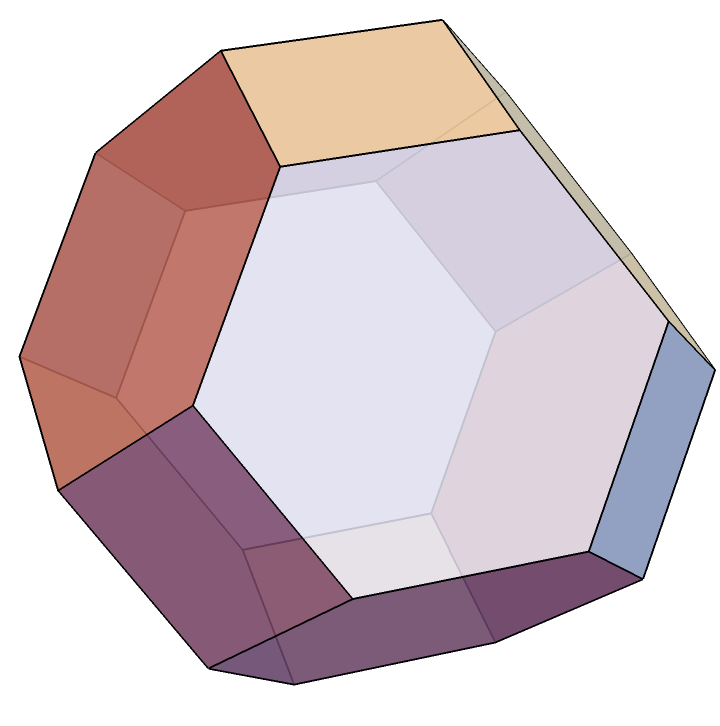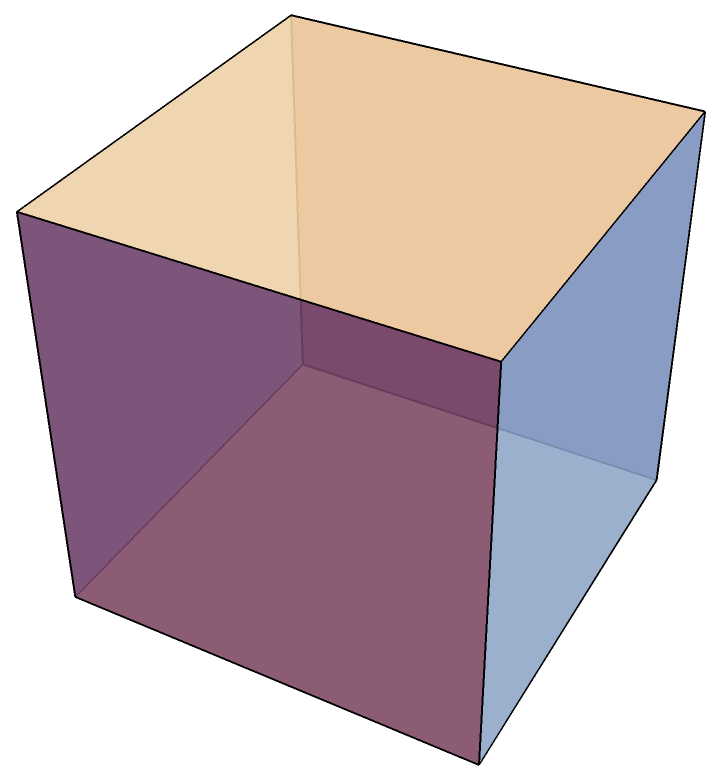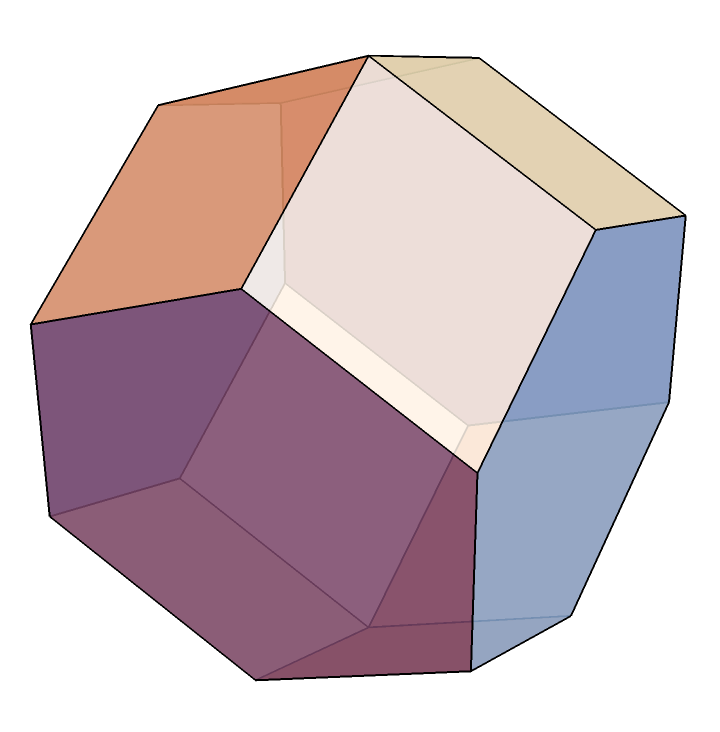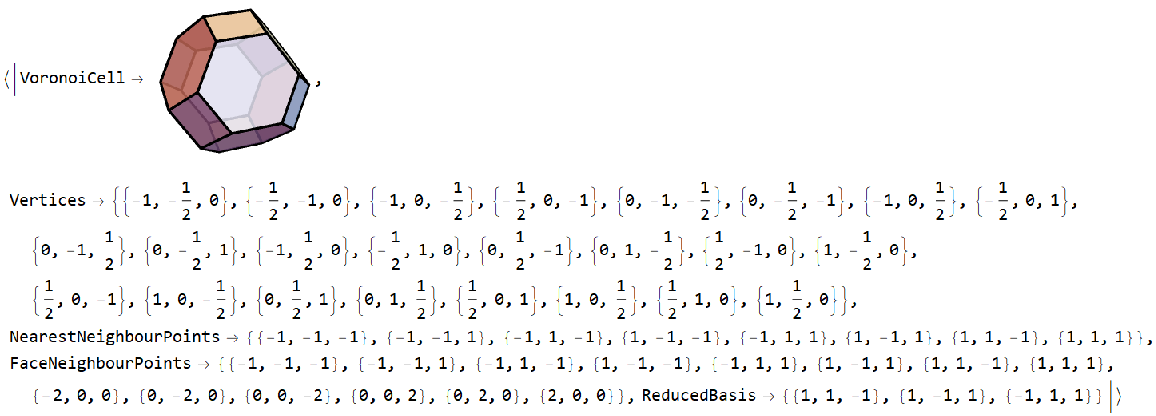Wolfram Function Repository
Instant-use add-on functions for the Wolfram Language
Function Repository Resource:
Compute the Voronoi cell for a 3D lattice
ResourceFunction["VoronoiCell3D"][{v1,v2,v3}] displays the Voronoi cell for a lattice defined by the basis vectors vi. | |
ResourceFunction["VoronoiCell3D"][{v1,v2,v3},prop] displays additional information about the Voronoi cell, as specified by prop. |
| "Vertices" | provides the vertices of the Voronoi cell |
| "NearestNeighbourPoints" | lists nearest neighbor lattice points (to the origin) |
| "FaceNeighbourPoints" | lists the lattice points next to the faces of the Voronoi cell |
| "ReducedBasis" | gives a reduced set of basis vectors |
| All | gives the Voronoi cell along with all the values mentioned above |
Plot the Voronoi cell for a body-centred cubic lattice:
| In[1]:= |
| Out[1]= |  |
Voronoi cell for a simple cubic lattice:
| In[2]:= |
| Out[2]= |  |
Voronoi cell for a body-centred tetragonal lattice:
| In[3]:= |
| Out[3]= |  |
Voronoi cell for a face-centred cubic lattice:
| In[4]:= |
| Out[4]= |  |
Voronoi cell for a simple hexagonal lattice:
| In[5]:= |
| Out[5]= |  |
"Vertices" provides the vertices of the Voronoi cell treating the center as origin:
| In[6]:= |
| Out[6]= |  |
Use "NearestNeighbourPoints" to obtain the nearest neighbor lattice points (to the origin):
| In[7]:= |

Use "FaceNeighbourPoints" to obtain the lattice points next to the faces of the Voronoi cell:
| In[8]:= |
| Out[8]= |  |
Use "ReducedBasis" to get a reduced set of basis vectors:
| In[9]:= |
| Out[9]= |  |
Use All to obtain the Voronoi cell along with all supported properties:
| In[10]:= |
| Out[10]= |  |
This work is licensed under a Creative Commons Attribution 4.0 International License